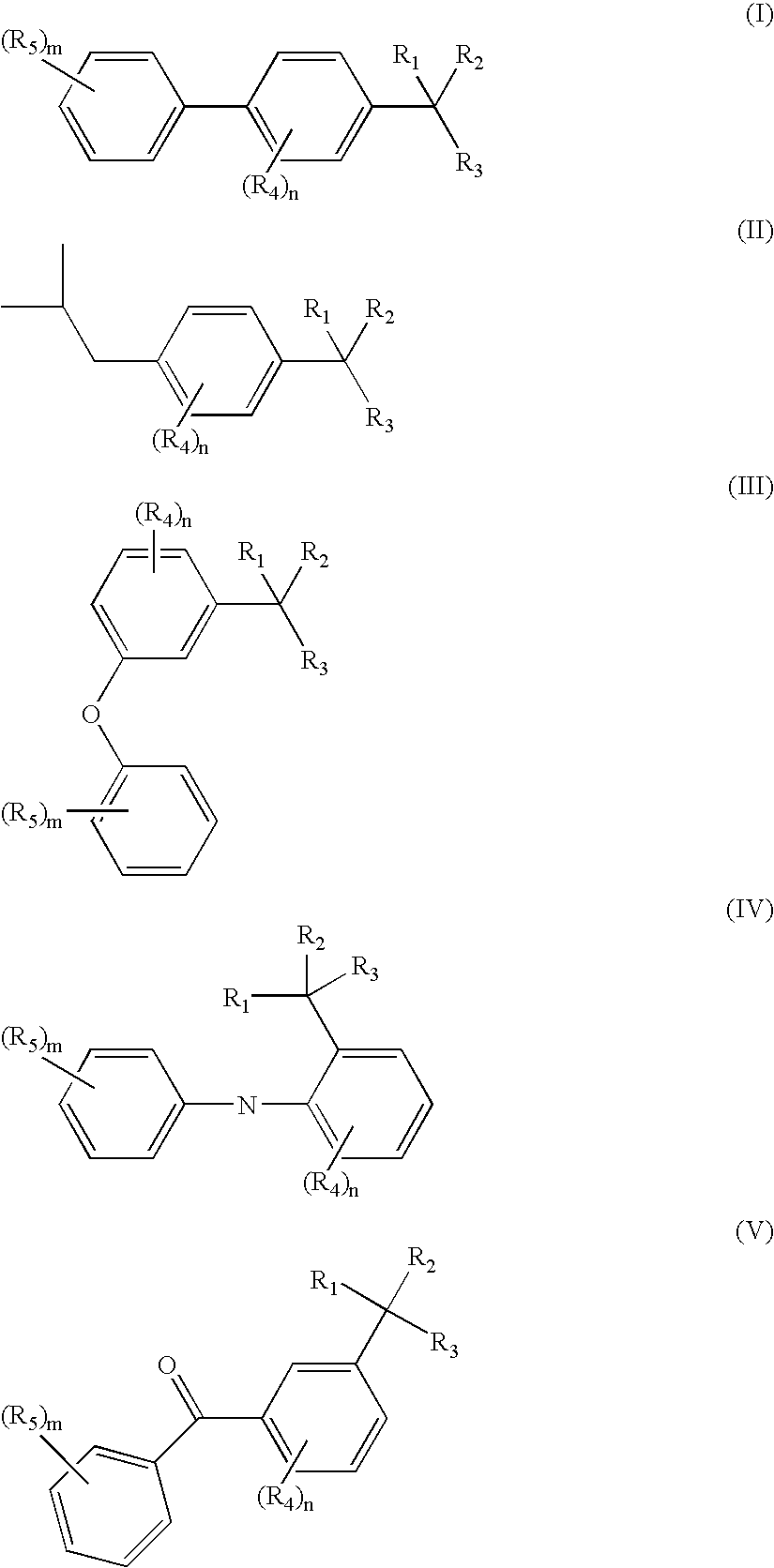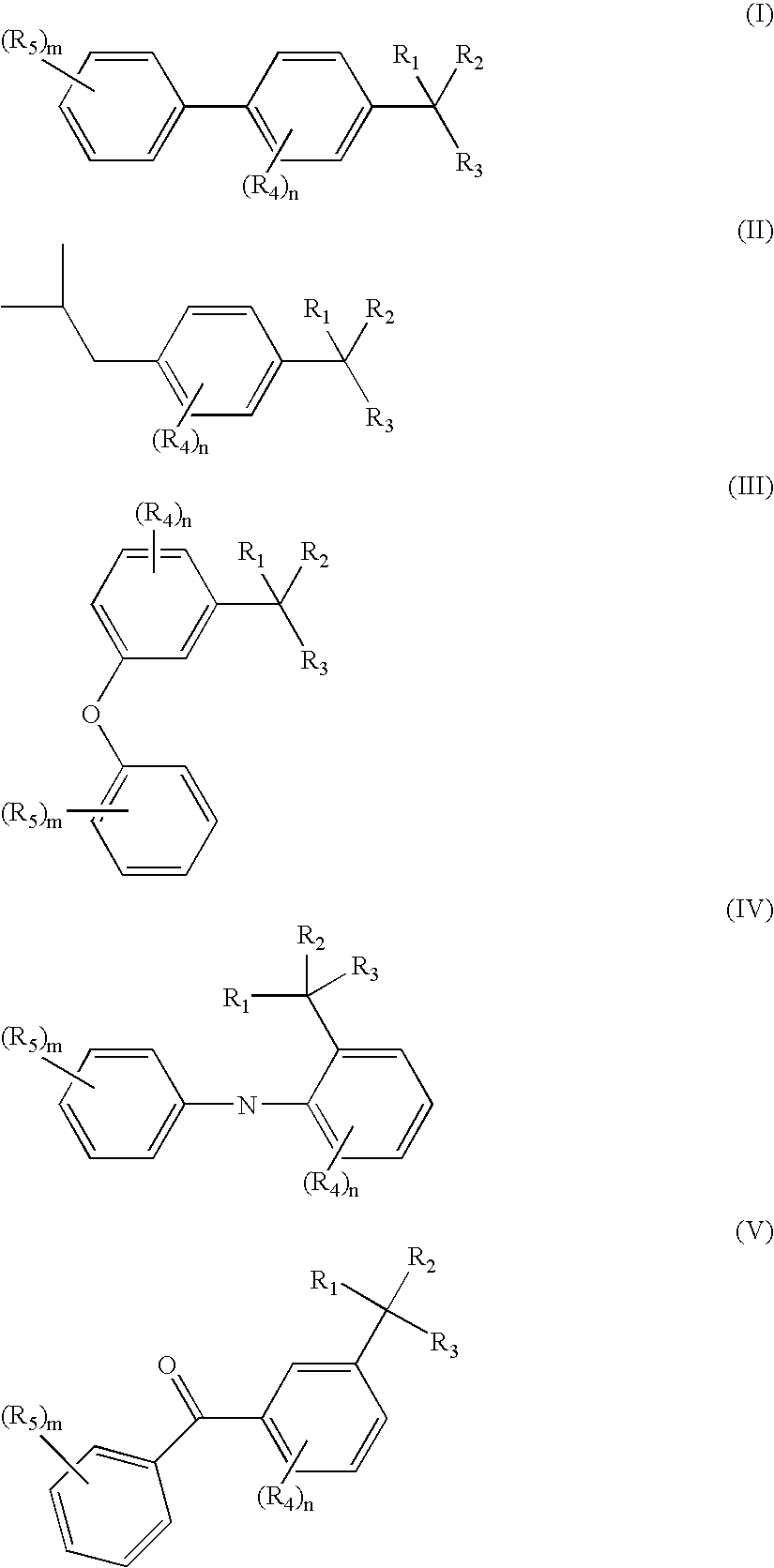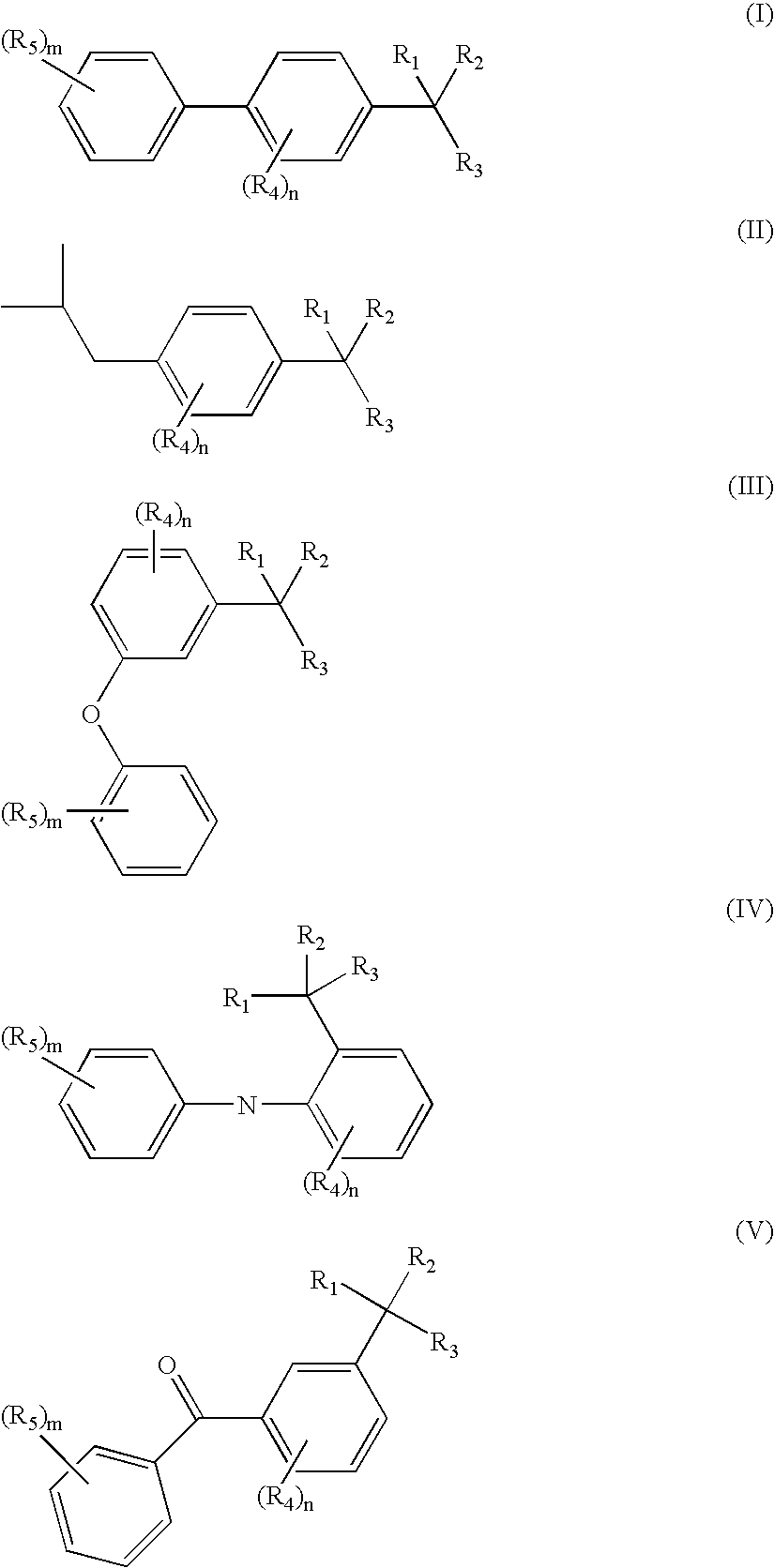Methods of treating overactive bladder and urinary incontinence
a technology of urinary incontinence and overactive bladder, applied in the field of therapeutic compounds, can solve the problems of limited efficacy of antimuscarinics treatment, dry mouth, hypersensitivity or destruction of bladder sensory neurons,
- Summary
- Abstract
- Description
- Claims
- Application Information
AI Technical Summary
Benefits of technology
Problems solved by technology
Method used
Image
Examples
example 1
Identification of (R)-2-(2-fluoro-4-biphenyl)propionic acid as Agents for Treating Overactive Bladder and Urinary Incontinence
[0176] This Example provides a randomized, double-blind, placebo-controlled study of the effect of daily treatment with (R)-2-(2-fluoro-4-biphenyl)propionic acid. Study subjects have mild to moderate dementia of the Alzheimer's type and may be taking acetylcholinesterase (AChE) inhibitors provided the dose has been stable for at least 3 months. Subjects will be stratified at randomization for use / non-use of AChE inhibitors. A target of 201 subjects (67 subjects per arm) in 3 treatment groups are enrolled for 12 Months with optional follow-on treatment after Month 12 (2 treatment groups).
[0177] The study subjects are randomly divided into 3 groups for which the dosing regimen is one of following: [0178] Group 1: 800 mg (R)-2-(2-fluoro-4-biphenyl)propionic acid (given as one 400 mg (R)-2-(2-fluoro-4-biphenyl)propionic acid tablet and 1 placebo tablet, BID); [...
example 2
Acetic Acid Model for Evaluating Compounds in the Treatment of Overactive Bladder and Urinary Incontinence
[0194] Female rats (250-275 g BW) are anesthetized with urethane (1.2 g / kg) and a saline-filled jugular catheter (PE-50) is inserted for intravenous drug administration and a heparinized (100 units / ml) saline-filled carotid catheter (PE-50) is inserted for blood pressure monitoring. Via a midline abdominal incision from xyphoid to navel, a PE-50 catheter is inserted into the bladder dome for bladder filling and pressure recording.
[0195] The abdominal cavity of the animal is moistened with saline and closed by covering with a thin plastic sheet in order to maintain access to the bladder for filling cystometry emptying purposes. Fine silver or stainless steel wire electrodes are inserted into the external urethral sphincter (EUS) percutaneously for electromyography (EMG).
[0196] Saline and all subsequent infusates are continuously infused at a rate of about 0.055 ml / min via the ...
example 3
[0197] To test whether compounds and compositions are capable of modulating Aβ levels, H4 neuroglioma cells expressing APP695NL and CHO cells stably expressing wild-type human APP751 and human mutant presenilin 1 (PS1) M146L are used. Generation and culture of these cells have been described. See Murphy et al., J. Biol. Chem., 274(17):11914-11923 (1999); Murphy et al., J. Biol. Chem., 275(34):26277-26284 (2000). To minimize toxic effects of the compositions and compounds, the H4 cells are incubated for 6 hours in the presence of the various compositions and compounds. To evaluate the potential for toxic effects of the compositions and compounds, additional aliquots of cells are incubated in parallel with each composition or compound. The supernatants are analyzed for the presence of lactate dehydrogenase (LDH) as a measure of cellular toxicity.
[0198] After incubating the cells with the compositions and compounds for a pre-determined time period, sandwich enzyme-l...
PUM
| Property | Measurement | Unit |
|---|---|---|
| Frequency | aaaaa | aaaaa |
Abstract
Description
Claims
Application Information
 Login to View More
Login to View More - R&D
- Intellectual Property
- Life Sciences
- Materials
- Tech Scout
- Unparalleled Data Quality
- Higher Quality Content
- 60% Fewer Hallucinations
Browse by: Latest US Patents, China's latest patents, Technical Efficacy Thesaurus, Application Domain, Technology Topic, Popular Technical Reports.
© 2025 PatSnap. All rights reserved.Legal|Privacy policy|Modern Slavery Act Transparency Statement|Sitemap|About US| Contact US: help@patsnap.com



